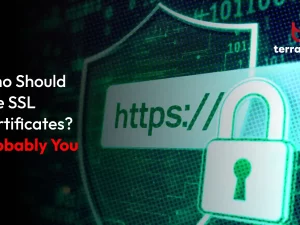While detecting insider threats is critical, detection alone is not enough. Once a threat is identified whether it is a malicious insider or a careless mistake, the clock starts ticking. What matters next is how quickly and effectively your organization can respond. This is where an Insider Threat Response System becomes a core part of your cybersecurity defense.
Unlike traditional monitoring tools, which may alert you to suspicious behavior without offering next steps, an Insider Threat Response System connects the dots: detection, context, escalation, and action. It empowers security teams to not only identify risks from within but to contain and remediate them before they escalate into full-blown incidents.
Why Response Systems Are Essential in Insider Threat Management
Insider threats operate in a grey area, where behavior may be unusual but still technically authorized. This makes the response process much more delicate and complex than handling a typical external attack. A well-built response system provides not only visibility but also clarity and control in real-time. Organizations today need more than just logs and alerts. They need solutions that:
- Monitor behavior continuously across endpoints, applications, and cloud services.
- Detect anomalies and correlate them with risk profiles.
- Trigger real-time alerts and automated containment workflows.
- Support guided investigations and policy enforcement.
- Document every step for compliance, audits, and future learning.
Core Functions of an Insider Threat Response System
Responding to insider threats requires a different playbook, one that blends automation with human oversight and sensitivity to internal dynamics. A strong response system should help security teams act quickly, but also thoughtfully. Here are the core capabilities you should expect:
- Real-Time Behavioral Monitoring
Continuously tracks user activity across digital environments to flag deviations from normal behavior. - Risk-Based Alerting
Not all anomalies are threats. Advanced response systems assess context and prioritize alerts based on business impact and intent. - Automated Containment Actions
Temporarily block suspicious users, isolate endpoints, or restrict access automatically while a deeper investigation is conducted. - Investigation and Forensic Tools
Provides detailed activity logs, screen recordings, or file movement history to support accurate decision-making. - Integration with Security Ecosystem
Works with SIEM, DLP, IAM, and other tools to ensure a coordinated and scalable response across platforms. - Reporting and Compliance Support
Generates documentation and incident reports to meet internal governance and regulatory requirements.

Building a Culture of Response, Not Just Detection
A well-designed response system is not just a technical tool, but a part of an organizational mindset. Addressing insider threats effectively means having policies, people, and platforms that can work together when time is critical. With clearly defined roles, escalation paths, and pre-approved workflows, businesses can minimize damage, maintain trust, and learn from every incident.
Insider threats are difficult to predict, but with the right response system, they do not have to be devastating. By investing in tools that combine visibility, intelligence, and action, organizations can stay a step ahead of internal risks.
To explore this topic in more depth, don’t miss our upcoming Terrabyte x DataResolve webinar:

Terrabye X DataResolve Present:
Inside Out: Combatting Insider Threats Before They Strike
📅 20 August 2025 | 14:00 – 15:00 SGT (GMT+8)
📍 Hosted on Microsoft Teams
This session will dive deep into how Insider Threat Response Systems work and how they can help your business take action before it’s too late.
Secure your spot today and learn how to defend yourself from the inside out.




